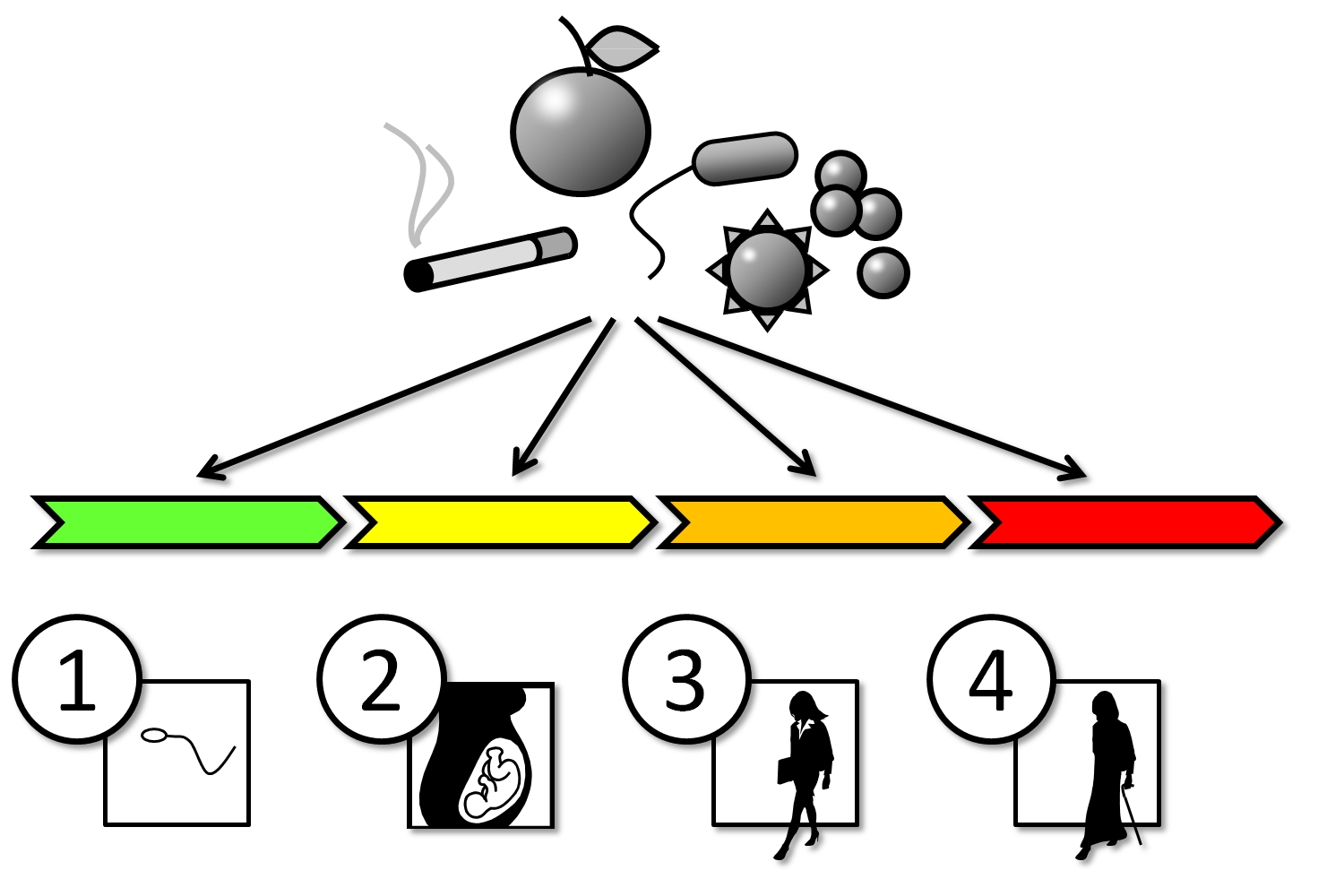SP 4
Epigenom/Transkriptom Dynamics
Chronic inflammatory bowel diseases often manifest in early adulthood and represent a massive burden for affected individuals. The two major subforms of chronic inflammatory bowel diseases are ulcerative colitis and Crohn’s disease. Despite all research efforts, the exact cause of these diseases is still unknown. However, to improve therapy options for patients a more detailed knowledge about mechanisms of manifestation and disease progression is required.
Our previous work has shown that a dynamic molecular memory, the so called epigenome, plays a key role in the diseases. It is known, that the epigenome can remember environmental influences like tobacco smoke, pesticides, stress etc. Moreover, this memory can have a livelong impact on health and disease. In contrast to that, it is unknown how this epigenome-memory is altered throughout a disease course, and – in return – how these alterations influence the disease.

The crosstalk between disease course and epigenome is the target of this research project. Starting with selected patients with a specific inherited disease risk, we create a high-resolution map of this molecular memory. In parallel, we monitor the molecular activity (transcriptome) which reflects the effects of the molecular memory. In order to understand how disease course, therapy and epigenome interact, we create a multitude of such maps of the previously selected patients. Similar to a movie, which is created by the combination of a sequence of individual pictures, we will illustrate the dynamics of disease courses by combining a sequence of the maps we generated.
Finally, we aim not only for a better understanding of mechanisms contributing to manifestation and progression of chronic inflammatory disorders, but also for a redefinition of existing disease types: A current hypothesis suggests that several diseases that manifest in different organs but at the same time show high similarities in mechanisms and therapies might actually be only different subtypes of one and the same disease. Finding such a common term might improve how clinicians from different fields work together and might help to use therapies more effectively.
Keywords: individual disease course, epigenome, transcriptome



